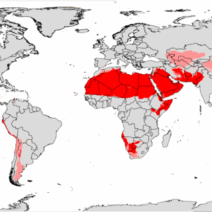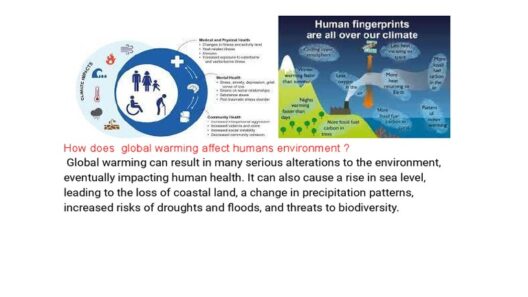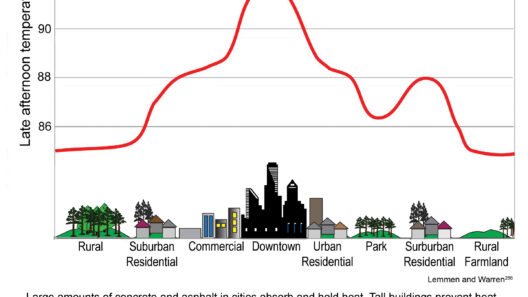The relationship between humans, animals, and the environment presents a complex web of interdependencies that becomes starkly apparent in an age of climate change. The continuous rise in global temperatures and the pervasive alteration of ecosystems has forged a tenuous bond among these entities, delineating a shared destiny—our fates are inextricably linked. This review examines how climate change affects various species, ecosystems, and human society, ultimately highlighting the symbiotic connections that define our existence.
Initially, it is vital to acknowledge the ecosystems upon which all life depends. Forests, wetlands, oceans, and grasslands exhibit an intricate tapestry that facilitates the exchange of energy and nutrients. These habitats serve as homes for countless species, from the smallest microorganisms to the largest mammals. Unfortunately, anthropogenic activities, including deforestation, pollution, and urbanization, disrupt these natural systems. Deforestation, for instance, not only results in habitat loss for species such as orangutans and jaguars, but also contributes to climate change by releasing stored carbon dioxide back into the atmosphere. The resulting climate shifts alter precipitation patterns and temperature extremes, thwarting the ability of many species to acclimate or migrate.
Climate change manifests itself through various channels, affecting biodiversity on a global scale. Extinction rates have accelerated alarmingly, with current estimates indicating that species are vanishing at a rate up to 1,000 times the natural background rate. Coral reefs, often termed the “rainforests of the sea,” are succumbing to bleaching events driven by increased sea temperatures and acidification—phenomena that disrupt entire aquatic ecosystems. The ramifications are significant: as fish populations dwindle, so too does the sustenance for communities reliant on these resources for their livelihoods. Such disparities vividly illustrate how the fates of humans and animals are interwoven; the decline of one heralds the doom of the other.
In addition to direct biodiversity losses, climate change generates a cascade of ecological disruptions. Changes in temperature and weather systems precipitate mismatches in the timing of life cycles among species—a phenomenon referred to as phenological shifts. For example, if flowering plants bloom earlier due to warmer temperatures, but pollinators such as bees do not adjust their lifecycle accordingly, the pollination process falters. This disconnect not only threatens plant species but reverberates through the food chain, affecting herbivores and their predators alike. Here, the interdependence of species emerges as a focal point; the degradation of one element has far-reaching consequences.
The plight of migratory species further accentuates the repercussions of climate change. Birds, fish, and various terrestrial animals rely on migratory pathways that often span vast geographical territories. Shifts in climatic conditions can disrupt these routes and timing, exposing these creatures to increased mortality risks. For instance, the Arctic Tern travels immense distances between polar regions and the tropics, facing challenges such as shifting ocean currents and diminishing food supplies due to warmer waters. These changes pose existential threats, illustrating how species that are globally dispersed still face universal climate impacts.
Humans, the dominant species on the planet, find themselves at a critical juncture. The repercussions of environmental degradation are manifesting through severe weather events, rising sea levels, and disruptions in food systems. Agricultural sectors, which once thrived under stable climates, are increasingly vulnerable to shifts in weather patterns. Crop failures and food insecurity are poised to become commonplace, particularly in developing nations. Here, the concept of environmental justice emerges, emphasizing the unequal burden borne by disadvantaged populations who often contribute least to greenhouse gas emissions yet suffer most from climate impacts.
Moreover, the psychological implications of environmental change manifest as eco-anxiety, a testament to the growing concern over the future of our planet. Individuals grapple with feelings of helplessness as they witness the deterioration of their communities and natural surroundings, prompting a reevaluation of societal values and priorities. Awareness can be a double-edged sword; while it can foster a sense of urgency for ecological action, it can also lead to despondency if not paired with effective strategies for engagement.
To counteract these challenges, humanity must champion the principles of sustainability and conservation. Adaptive management approaches, which emphasize resilience and the ability to adjust to changes, are essential for both ecosystems and human societies. Initiatives that promote habitat restoration, protect biodiversity, and reduce carbon footprints are paramount. The implementation of renewable energy sources, improved land usage, and sustainable agricultural practices can mitigate the severity of climate impacts while bolstering communities economically.
Moreover, fostering collaboration among stakeholders—including governments, businesses, and grassroots organizations—is essential for crafting comprehensive climate solutions. Education plays a pivotal role in cultivating a culture of environmental stewardship, encouraging individuals to partake in conservation efforts that benefit both wildlife and their communities. Ecological literacy empowers citizens to recognize their impact on the environment and advocate for policies that align with sustainability.
In conclusion, the complex interaction between humans, animals, and the environment embodies a delicate equilibrium. Climate change has cast this balance into disarray, highlighting the profound connections that bind us all. The future of our planet hinges upon recognizing these interdependencies and taking decisive action to mitigate climate impacts. As stewards of this earth, it is incumbent upon humanity to ensure a habitable and thriving environment for all species. For our own well-being and that of future generations, cultivating a sustainable coexistence is not merely a choice; it is a necessity. The saga of our shared fate in a warming world is just beginning, and our choices will determine its trajectory.







